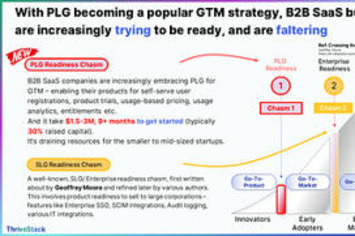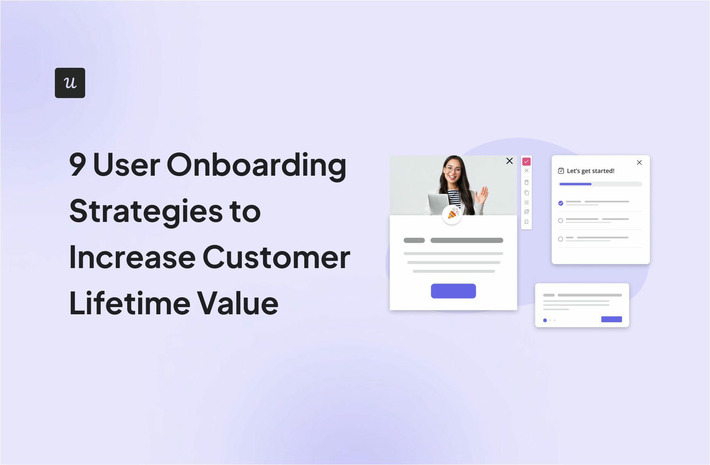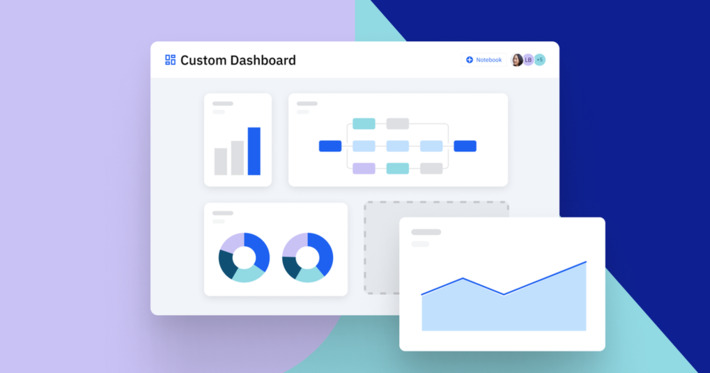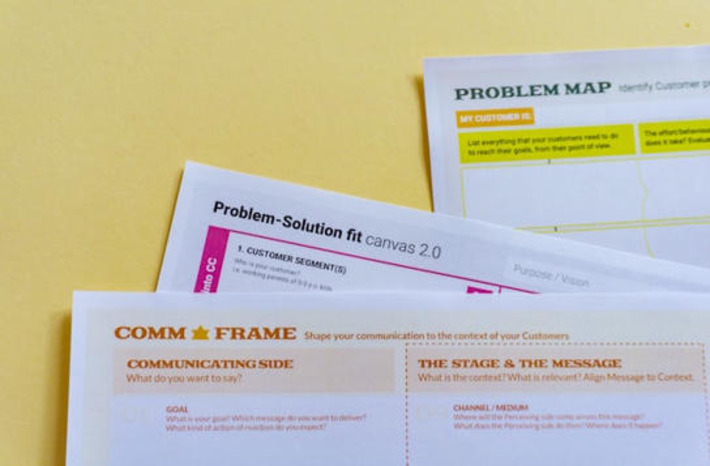 Your new post is loading...

|
Scooped by
Joemktg
November 1, 2024 9:40 AM
|
Statsig’s founding was inspired by Facebook’s experimentation culture, with CEO Vijaye Raji envisioning a platform to bring similar tools to a wider audience. Starting with a small team, Statsig faced early challenges in user adoption but eventually gained traction when former colleagues recognized the platform’s value. As Statsig evolved, its focus shifted beyond Facebook-inspired tools to meet specific market needs, such as in-market account targeting and direct support for enterprise clients like HelloFresh and OpenAI, propelling Statsig past $25M ARR with thousands of clients. Experimentation and feature flagging became core offerings, soon complemented by product analytics and session replays. Adapting to the shift toward data warehouses, Statsig’s solutions now integrate seamlessly with enterprise data hubs like Snowflake, positioning Statsig as a leader in warehouse-native tools. Key to its success has been building alongside customers, allowing for rapid iteration and expansion of products, earning it the trust of major tech clients and establishing Statsig as a one-stop data platform for digital product development.

|
Scooped by
Joemktg
November 1, 2024 9:36 AM
|
Tip #1: Pair ABM and GenAI with Reliable Data Using generative AI (GenAI) with ABM is highly effective when combined with reliable data to target relevant accounts accurately. By focusing on in-market accounts and their specific research behaviors, marketing efforts become more precise, minimizing wasted resources on unqualified leads. Tip #2: Prioritize Buyer Insights for ABM Content Success
High-quality, educational content tailored to buyer insights fosters stronger relationships with target accounts. Leveraging market research and customer feedback can help create content that resonates with buyers, making them more inclined to engage. Tip #3: Shift from Sales-Focused to Buyer-Focused Approaches
ABM strategies should focus on buyer enablement, emphasizing education over merely moving leads through a funnel. Using tools like IntentMail AI™ allows teams to build trust by personalizing interactions according to the buyer's research journey, supporting a more meaningful buying experience.

|
Scooped by
Joemktg
November 1, 2024 9:33 AM
|
Generational shifts in B2B purchasing are transforming the buying process as Millennials and Gen Z increasingly drive high-value transactions through digital self-service channels. With more than half of B2B deals above $1 million anticipated to be digital by 2025, businesses must shift focus from managing transactions to enhancing digital buying experiences. Key predictions indicate that B2B organizations will struggle with organizational restructuring, with only 12% of marketing leaders confident in their current structure’s revenue potential. Additionally, younger buyers will rely more on external influencers, like social media networks, in decision-making. Despite the rise of generative AI, Forrester warns that many companies may prematurely scale back on AI investments due to impatience with delayed ROI, potentially hindering long-term growth. Leaders are advised to pivot focus toward revenue processes and refining growth strategies to align with new buying behaviors and technology. B2B marketing and sales teams need to adapt rapidly to cater to these digital-native buyers by streamlining digital self-serve interactions, leveraging social influencers, and focusing on sustainable AI integration.

|
Scooped by
Joemktg
November 1, 2024 9:29 AM
|
Effective user onboarding is crucial for startups, as it engages, educates, and retains early users, who shape a product’s long-term success. A smooth onboarding process reduces friction, improves satisfaction, and decreases churn. Key elements include personalized in-app guides, product analytics to monitor engagement and identify issues, and real-time feedback capture for continuous improvement. Successful onboarding should guide users to the "aha" moment where they see immediate value, which for startups helps sustain user retention—typically, only 40% of users remain active after one month. Best practices include tailoring onboarding flows based on user segments, automating processes to scale with growth, and offering flexible content to accommodate different learning preferences. Metrics like onboarding completion rates, time to value, and feature adoption are essential for assessing effectiveness. By focusing on streamlined, engaging onboarding, startups can ensure that users find value early, creating a strong foundation for sustained engagement and growth.

|
Scooped by
Joemktg
November 1, 2024 9:27 AM
|
Freemium and free trial models each offer distinct benefits and challenges for SaaS businesses, depending on the product and target audience. Freemium allows users ongoing, limited access, aiming to convert them to paid plans by restricting advanced features. This model works well for straightforward B2C products, but companies must strike a balance to avoid giving away too much for free. Free trials, however, offer full product access but for a limited time, often 7-30 days, giving users an immersive experience. This method tends to drive higher conversion rates in products with complex features that benefit from full exposure. Each model suits different types of products and user expectations. For B2B or more intricate products, a free trial might showcase the value better, while freemium suits simpler products with easy-to-grasp benefits. Free trials can come as "opt-in" or "opt-out," impacting conversion and customer experience differently. For companies, choosing the right model hinges on understanding their users’ decision-making patterns and balancing the freedom offered with enticing conversion paths.

|
Scooped by
Joemktg
November 1, 2024 9:25 AM
|
Creating effective AI prompts, like improving communication skills, leads to better results and more precise responses. Crafting prompts with clear direction allows the AI to deliver output tailored to your needs, rather than generic corporate phrasing. For instance, when writing a product announcement with ChatGPT, simply asking for an attention-grabbing message without style guidance can yield overly enthusiastic results. Techniques like specifying a style or role, such as "in the style of [famous person]," can refine responses, creating outputs aligned with your goals and audience. This approach reflects the versatility of prompt engineering, where adjusting the AI’s perspective can greatly influence its outputs. Prompt engineering tactics such as role-playing, style unbundling, and few-shot learning enhance control over AI outputs, enabling responses suited to different contexts, from technical communication to creative tasks. Role-playing helps produce expert-level advice in specific fields, while style unbundling breaks down an expert’s methods into key characteristics. Few-shot learning offers targeted examples for more accurate responses. Additionally, synthetic bootstrapping generates diverse examples that help train the AI when real data is unavailable, supporting effective persona creation or task generation. These tools demonstrate that thoughtful prompt construction continues to benefit interactions with AI, even as models advance.

|
Scooped by
Joemktg
October 29, 2024 6:55 AM
|
The convergence of Product and Go-to-Market (GTM) technologies is reshaping the SaaS industry by merging traditionally separate tech stacks, allowing for unified strategies that drive growth and innovation. Previously, Product Engineering, Sales, and Growth teams each maintained distinct tech stacks, necessitating over 25 separate tools to manage the complexities of Product-Led Growth (PLG) activities such as user signups, in-app purchases, and PLG analytics. However, with B2B buyers adopting consumer-like behavior post-2020, the complexity of maintaining disparate tools has grown, highlighting the need for integrated solutions to enhance customer experience, accelerate growth, enable data-driven decisions, and foster team collaboration. As a response, the emergence of consolidated growth stacks, such as ThriveStack, enables seamless functionality across Product Enablement, Sales-Led GTM, and PLG strategies on a single platform. This shift allows SaaS companies to operate more efficiently, bridging gaps between Product and GTM teams to deliver a unified approach to customer engagement and retention. By adopting integrated solutions, SaaS companies can better respond to market changes, optimize decision-making, and foster innovation, positioning themselves competitively for future growth and success.

|
Scooped by
Joemktg
October 29, 2024 6:41 AM
|
SaaS and Cloud spending remain robust, projected to reach $300 billion by 2025, but growth is slowing compared to the rapid acceleration during the COVID-19 pandemic, which caused an unprecedented 67% growth rate among Cloud leaders. This spike was primarily driven by the urgent demand for remote work tools, e-commerce, and security solutions. However, as the pandemic eased, spending patterns began to normalize, leading to a slower average growth rate below 20% for public SaaS companies by 2024. This shift in budget allocation was further influenced by AI, as many organizations began diverting funds from traditional IT and SaaS to invest in AI capabilities. Consequently, industries like call centers saw a permanent shift to Cloud-first operations, while others returned to pre-pandemic spending rates. The emergence of AI has sparked a similar surge, with ChatGPT’s launch in November 2022 and Nvidia's growth from early 2024 as key milestones. AI's transformative potential is undeniable, yet the hyper-accelerated investment seen in recent months may also face a natural slowdown as budgets reach elasticity limits. Predictions suggest this “AI bubble” could sustain itself until late 2025 or early 2026, depending on how much budget it continues to draw from IT, services, and headcount allocations. Businesses may be wise to capitalize on current high valuations or M&A offers before AI spending also stabilizes into a more measured growth trajectory.

|
Scooped by
Joemktg
October 29, 2024 6:30 AM
|
In crafting an effective go-to-market strategy, it's essential to understand that what cannot be measured can still be managed, particularly when isolating factors that could lead to lost revenue. Many companies mistakenly abandon valuable tactics, believing they were ineffective without assessing control variations or accurate benchmarks, leading to unreliable data and missed growth opportunities. Implementing intentional tradeoffs, or "Acceptable Mistakes," allows companies to balance speed and precision while advancing goals without compromising integrity. Strategic market insights, achieved through a thorough understanding of customer needs and validated research, serve as the foundation, allowing for differentiation from competitors and preventing flawed assumptions that could weaken decision-making. A go-to-market strategy consists of four core elements: market insights, messaging and positioning, enablement, and launch. Messaging should prioritize audience desires over internal assumptions, aiming for resonance even if it means alienating less relevant personas. Enablement focuses on preparing cross-functional teams to actively support the product by tailoring sessions to specific roles. Finally, an impactful launch should be seen as a "rolling thunder," building anticipation ahead of time and sustaining momentum through iterative engagement post-launch. By prioritizing resources on high-impact elements rather than striving for perfection in every area, companies can create sustained growth and a memorable market presence.

|
Scooped by
Joemktg
October 29, 2024 6:23 AM
|
Identifying and guiding users to the "Aha moment"—the point where they emotionally realize the value of a product—is crucial to successful onboarding and Product-Led Growth (PLG). Distinguishing this from activation, which is the first firsthand experience of a product’s value, the Aha moment can significantly enhance motivation, deepen understanding, and foster brand loyalty. Techniques like personalization, segmenting user goals, and showcasing positive user experiences can create an onboarding flow that resonates with individual user needs. For instance, GrowthMentor and Pipedrive demonstrate effective Aha moments that inspire users by clearly communicating value through visuals or well-placed information on their homepages. Onboarding tools and methods like in-app tooltips, hotspots, and checklists allow new users to discover product features naturally, creating a guided path to their own Aha moment. Continuous improvement through feedback mechanisms and measuring onboarding milestones further ensures users are finding value early. Key metrics, such as user retention, goal completion rates, and engagement with critical features, help to pinpoint areas for improvement in the onboarding journey. Platforms like Mixpanel and Amplitude facilitate tracking and analyzing these aspects, enabling companies to address friction points proactively. Feedback tools, including NPS surveys and in-app chat, allow companies to respond to user needs dynamically, adapting the onboarding process to keep pace with user behaviors. By consistently refining onboarding flows, companies improve user retention and foster long-term engagement, which are foundational to a thriving PLG strategy.

|
Scooped by
Joemktg
October 29, 2024 6:20 AM
|
User onboarding is pivotal to transforming curious newcomers into loyal advocates by crafting a smooth and engaging entry experience. Key strategies to accomplish this include creating personalized onboarding flows based on user segments, leveraging omnichannel engagement for consistent support, and implementing gamification to foster interaction. Personalization can be achieved by surveying new users to tailor onboarding elements, such as walkthroughs, checklists, and tooltips, specific to their roles and needs. By analyzing the behaviors and experiences of power users, companies can recreate their successful paths, helping new users quickly access high-value features. Additionally, maintaining an omnichannel presence ensures seamless communication and a unified user experience across platforms. Incorporating advanced tools, such as A/B testing and in-app analytics, further optimizes onboarding by highlighting what resonates with different user segments and identifying friction points that hinder activation. On-demand support through a resource center, continuous user education via webinars, and strategic feedback collection also contribute to long-term user engagement and satisfaction. With examples like Attention Insight and The Room achieving significant gains in activation rates, companies can harness user insights and real-time data to refine onboarding and cultivate customer loyalty effectively.

|
Scooped by
Joemktg
October 29, 2024 6:10 AM
|
Building an effective analytics dashboard begins with defining clear goals and selecting metrics that align directly with business objectives. A focused dashboard integrates data from multiple sources, such as web analytics, social media metrics, and customer relationship management (CRM) systems, to deliver relevant insights. Choosing only the most pertinent metrics prevents data overload, streamlining the decision-making process and ensuring that users can easily understand and act on the information presented. Data quality is paramount in crafting an impactful dashboard. By validating, cleaning, and consistently formatting data, teams can rely on the insights generated to guide critical decisions. Tools like Amplitude simplify this process by offering built-in data governance features, making it easier to maintain data integrity without manual validation. High-quality, real-time data enables teams to identify trends, track key performance indicators (KPIs), and optimize their strategies based on reliable insights. To maximize the dashboard’s utility, incorporating interactive elements allows users to explore data in greater detail and tailor their view to specific needs. As company goals evolve, regular updates and iterative improvements to the dashboard ensure it remains relevant and valuable for decision-makers. The process of continuous iteration enables teams to stay agile, refine their focus, and make data-driven decisions that propel business growth.

|
Scooped by
Joemktg
October 28, 2024 8:05 AM
|
Traditional SEO approaches rely heavily on content-first strategies like blogs and articles, but they often miss the mark in terms of driving conversions. Companies like SurveyMonkey and Zapier have demonstrated the effectiveness of shifting from general content to product-led SEO, creating actual products that meet specific user needs. By developing SEO-driven tools such as survey templates or integration pages, these companies attracted high-intent users, leading to increased conversions and market leadership. Rather than solely producing content, businesses should focus on creating products or services tailored to search users' needs. AI can aid in content creation, but it should enhance, not replace, a strategic, user-focused SEO approach. Addressing the user’s intent at different stages of the customer journey and using AI thoughtfully can make a significant impact on SEO outcomes.

|
Scooped by
Joemktg
October 28, 2024 8:00 AM
|
Growth hacking, exemplified by companies like Airbnb and Dropbox, combines creativity, data, and rapid experimentation to drive significant growth without heavy spending. This strategy focuses on quick, scalable solutions such as Airbnb's Craigslist integration or Dropbox's referral program, which helped them expand rapidly. Growth hacking relies on five core metrics: acquisition, activation, retention, referral, and revenue (AARRR), and thrives by testing ideas through data-driven decisions, focusing on creative marketing approaches, product virality, and continuous improvement. To succeed in growth hacking, one must set clear goals, run small experiments, analyze results, and prioritize learning from both failures and successes. Tools such as Google Analytics, Optimizely, and HubSpot help growth hackers optimize their strategies. Moreover, avoiding common pitfalls—such as rushing decisions and focusing on vanity metrics—is crucial for long-term success. Growth hackers who embrace this iterative process and adapt to new technologies like AI will remain competitive in the ever-evolving growth landscape.

|
Scooped by
Joemktg
October 28, 2024 6:27 AM
|
The consumer-packaged-goods (CPG) and retail industries are navigating a period focused on growth and value amidst significant challenges like slowing population growth and fragmented consumer attention. To thrive, companies must pursue a dual agenda, as highlighted by McKinsey: discovering new growth opportunities through portfolio management while enhancing organizational capabilities. Marketing leaders, particularly CMOs, are central to this shift, tasked with building brands and delivering growth efficiently despite rising pressures. Their remit now extends beyond traditional marketing to include generative AI, innovation, and sales, reflecting the evolving complexity of the role. A survey of over 100 C-level executives in consumer and retail industries shows that while marketing leaders recognize the capabilities needed to drive growth, there are significant gaps in execution, particularly in areas like ecosystem development, marketing performance, and generative AI strategy. Only a minority believe their organizations have fit-for-purpose operating models to support their growth ambitions. This disconnect between strategic priorities and operational maturity poses a major challenge as leaders seek to close these gaps to build future-proof organizations capable of achieving ambitious growth agendas. To overcome these challenges, CMOs need to redefine their marketing operating models, integrating stronger structures, clear processes, and improved capabilities. A modern model should unify the diverse responsibilities of marketing leaders, ranging from brand management to cutting-edge tech initiatives, and align them with organizational goals. As demands on CMOs increase, they must focus on connecting teams through cross-functional collaboration, adopting agile governance, and scaling expertise in key growth drivers like generative AI and data-driven marketing. Finally, successful marketing organizations leverage strong partnerships and creative excellence to fuel their growth. Strategic collaboration with external partners, such as agencies and technology providers, is crucial for achieving marketing excellence. Marketers must also embrace generative AI and real-time data to boost efficiency and scale their efforts, while fostering a culture that encourages innovation and agility. By implementing a robust, flexible operating model and investing in both internal and external capabilities, marketing leaders can guide their organizations toward sustainable growth.

|
Scooped by
Joemktg
October 28, 2024 6:17 AM
|
A few top mistakes founders make:
#1. Not making cold email truly great. Don’t ask to pick someone’s brain, or coffee. Make the cold email so great, you’d want to invest based on just it alone.
#2. Not researching a VC enough. Is this the type of investments they do? They right stage? Etc.
#3. Hiding anything. VCs don’t expect investments to be perfect. But they are spooked by surprises. Don’t hide the bad stuff. Instead, just share it, and explain how you’re addressing it.
#4. Claiming you have no competition. Everyone does, at least for budget. This makes you look less than savvy about your market.
#5. Not having a great CTO. It’s just too competitive today. No one wants to fund a “great business guy” without an A+ CTO there as well.
#6. Not growing quickly enough. VCs can only invest in folks that can hit $100m+ in revenue or more in 7–10 years. If you’re not even close to that pace, 99% of VCs won’t invest.

|
Scooped by
Joemktg
October 28, 2024 6:14 AM
|
To become truly customer-focused, companies must develop a robust data-driven culture. While many businesses claim to be "customer-first," they often fall short due to a lack of actionable data insights. The key to solving this issue is leveraging the right tools, such as Amplitude, which helps gather and analyze customer behavior. When Mysa, a smart thermostat company, implemented Amplitude, they saw significant improvements in how their marketing teams addressed customer needs. Despite the initial challenges in integrating the tool with their existing tech stack, Amplitude’s ease of use and comprehensive documentation helped accelerate adoption. This shift allowed Mysa’s marketing team to track customer journeys and improve campaigns, leading to more prospects completing the sales funnel. The real transformation, however, comes from fostering a data-first mentality across all teams. It's not just about adding new tools but also ensuring employees understand the value of data in shaping business decisions. Amplitude enabled Mysa to close the gap between ecommerce insights and broader product ecosystems, but this success required a mindset shift. By establishing KPIs and fostering individual ownership of data metrics, teams began to rely more heavily on data to guide their strategies. Live workshops, hands-on training, and continuous education, such as Loom videos and taxonomy sheets, helped marketers navigate Amplitude’s features and ask the right questions, leading to more data-driven decisions and more effective marketing campaigns.

|
Scooped by
Joemktg
October 28, 2024 6:04 AM
|
Toplyne, a Bengaluru-based product-led growth (PLG) startup, initially achieved significant success by leveraging AI-driven data analytics to convert freemium users into paying customers. Founded in 2021, Toplyne attracted notable clients like Canva and raised $15 million in funding from prominent investors, including Tiger Global and Sequoia Capital India. Its early triumphs were fueled by a strong product-led strategy, experienced leadership, and significant early-stage capital, which propelled the company’s valuation to $80 million in just over a year. However, despite these accomplishments, Toplyne struggled to maintain its growth trajectory, ultimately facing product-market misalignment and heightened competition from larger players like HubSpot and Segment. The downfall of Toplyne highlights critical lessons for startups navigating the SaaS landscape. A lack of scalability, leadership turmoil, and failure to adapt to market demands significantly hindered the company's ability to grow beyond its initial success. Leadership disagreements led to internal instability, and as competitors overtook its product offerings, Toplyne’s early momentum unraveled. These challenges underscore the importance of differentiating from competitors, maintaining stable leadership, and sustaining a customer-centric approach to ensure long-term survival in a fast-evolving market.

|
Scooped by
Joemktg
October 28, 2024 6:00 AM
|
Marc Benioff and Mark Roberge revolutionized the sales playbook, but today’s software landscape, particularly with AI, requires adapting to new challenges. A recent Go-To-Market survey by Theory Ventures revealed that despite founders’ optimism increasing, sales cycles have lengthened, especially in the mid-market due to CFO budget constraints. Moreover, AI's impact on sales conversion and ARR growth remains minimal, though there's growing interest in hybrid pricing models, which are driving a significant improvement in net dollar retention, especially with a 3x growth for usage-based pricing. The data shows that sales cycles, payback periods, and sales quotas are increasing in step. However, despite the buzz around AI, it hasn't significantly impacted conversion rates or overall revenue growth. Instead, founders are encouraged to focus on more traditional strategies like refining their pricing models to include usage-based components, which have proven to boost retention and revenue. Here are the 10 observations from the Go-To-Market survey: - Founders are more positive despite challenges.
- Sales cycles are getting longer, especially in mid-market.
- Payback periods and quotas have increased.
- Buyer scrutiny has intensified, increasing sales-qualified conversions.
- AI hasn’t impacted conversion rates significantly.
- AI has no noticeable effect on ARR growth.
- Efficiency gains from AI are perceived but not measurable.
- Hybrid pricing models drive 3x net dollar retention.
- Founders should focus on adjusting pricing models.
- AI adoption still faces challenges in optimizing sales conversion.

|
Scooped by
Joemktg
October 28, 2024 5:52 AM
|
Product-led growth (PLG) is an effective strategy for SaaS companies, emphasizing data-driven decisions to acquire and retain customers sustainably. By allowing users to experience a product's core value through free trials or freemium models, companies can reduce customer acquisition costs (CAC) and rely less on traditional marketing. Metrics such as Time to Value (TTV) and feature adoption rates are critical in ensuring smooth activation and habit formation, which lead users from initial engagement to becoming paying customers. Monitoring activation metrics like the “AHA! Moment,” where users realize a product’s value, helps companies optimize their onboarding processes. Additionally, tracking retention and churn rates provides insights into long-term customer engagement, essential for maintaining sustainable growth. Engagement metrics like the Habit Moment and growth loops, such as virality and Net Promoter Score (NPS), further enhance user-driven referrals and organic growth, helping companies achieve compounding growth without excessive marketing investment. While quantitative metrics like CLV and churn are crucial, companies must balance data with intuition when making decisions. Financial metrics like Average Revenue Per User (ARPU) and Net Revenue Churn help SaaS companies evaluate profitability and plan long-term growth. Ultimately, successful PLG strategies combine data insights with instinct, ensuring companies optimize both product experience and customer acquisition.

|
Scooped by
Joemktg
October 28, 2024 5:47 AM
|
Understanding product management and UX terminology is essential for professionals to engage in strategic discussions effectively. The glossary includes vital concepts like Customer Lifetime Value (CLV), Blue-Ocean Strategy, and Continuous Delivery, which aid in describing product development processes and business strategies. Aligning language between UX and product teams enhances communication and collaboration, ensuring smoother workflows and better decision-making. Product management frameworks such as Minimum Viable Product (MVP) and Jobs to Be Done (JTBD) are critical in building successful products. These concepts help teams focus on meaningful user outcomes, reducing inefficiencies like feature creep and UX debt. By mastering these terms, professionals can optimize their product strategies and improve overall user satisfaction.

|
Scooped by
Joemktg
October 25, 2024 7:02 AM
|
Gartner's 2025 strategic technology trends are organized across three themes: AI imperatives and risks, new frontiers of computing, and human-machine synergy. AI trends include agentic AI for automating decision-making, AI governance for managing ethics and performance, and disinformation security for building trust. New computing trends like post-quantum cryptography, ambient invisible intelligence, energy-efficient computing, and hybrid computing aim to address data security, sustainability, and computational challenges. These innovations present opportunities and obstacles, from requiring new infrastructure to managing privacy concerns and complex system integrations. Agentic AI refers to artificial intelligence systems capable of autonomous decision-making, where the AI plans and takes actions based on goals set by the user. Unlike traditional automation, agentic AI does not require constant human intervention and can independently assess situations to execute tasks. It acts as a virtual agent, augmenting human efforts by offloading repetitive or complex activities, thus boosting productivity and efficiency. However, to prevent unintended consequences, it requires robust guidelines to ensure its decisions align with the desired ethical and operational standards.

|
Scooped by
Joemktg
October 25, 2024 6:54 AM
|
Landbase, an agentic AI platform for go-to-market (GTM) strategy, recently emerged from stealth mode, raising $12.5M in seed funding. The platform uses a proprietary AI suite called GTM-1 Omni to automate and optimize GTM workflows, leveraging a unique "Reinforcement Learning with Human and Performance Feedback" methodology to enhance decision-making. Early adopters have reported a 7x higher lead conversion rate and a 70% reduction in time spent per lead. Landbase aims to unify sales and marketing efforts by breaking down silos and improving efficiency for B2B organizations. The platform's founding team includes experienced professionals from AppDirect, OysterHR, Carta, and Everstring, emphasizing a strong foundation in both AI and business scalability. Landbase is set to release tools like the GTM Trust Score to help businesses evaluate and enhance brand performance. With its focus on AI-driven, omnichannel GTM automation, Landbase is poised to set a new benchmark for SaaS tools in the market, offering significant time savings and performance improvements.

|
Scooped by
Joemktg
October 25, 2024 6:52 AM
|
A successful go-to-market (GTM) strategy depends on building the right team, defining objectives, and fostering an effective work environment. The core GTM team includes roles like the Product Marketer, who leads marketing efforts, and the GTM Manager, who coordinates between teams to streamline execution. Supporting teams include marketing, sales, and product development, each crucial for creating awareness, converting leads, and ensuring product-market readiness. Establishing clear metrics such as customer acquisition cost (CAC), lifetime value (LTV), and recurring revenue (MRR) ensures alignment towards shared goals. Creating an environment that fosters productivity is just as important as assembling the GTM team. Effective communication channels like Slack or Microsoft Teams help align efforts across departments, while project management tools like Wrike or Asana keep the team organized and track progress towards milestones. Setting specific, measurable objectives—such as revenue targets or customer acquisition goals—provides a clear roadmap and ensures all members are working towards a unified vision. The GTM team's collaborative approach lays the foundation for a successful product launch and long-term market growth.

|
Scooped by
Joemktg
October 25, 2024 6:46 AM
|
Highspot's Fall '24 release introduces significant features to enhance GTM productivity, focusing on unifying enablement activities across sales, marketing, and customer success teams. The new Initiative Scorecard ties GTM activities to business outcomes, allowing real-time insights into execution. Highspot Copilot, the generative AI assistant, now offers always-on coaching, skill assessments, and learning reinforcement to improve the sales process. The release also includes deeper AI and CRM integrations with Microsoft and Salesforce, enriching sales workflows and enabling personalized, data-driven content creation at scale. Highspot’s advancements are further supported by their community efforts, notably Spark 24, an event aimed at driving predictable revenue growth through shared GTM insights. This year's Spark Community event will feature experts from major companies like AWS, Microsoft, Salesforce, and more, with over 50,000 members actively engaged in courses offered by Highspot University. The release and community engagement both aim to break down silos between GTM teams, boosting productivity and efficiency in achieving predictable growth.
|
|



 Your new post is loading...
Your new post is loading...





























Action Items for the Growth Marketer:
Let JoeMarketing assist you with your PLG motion. Learn more about our GTM, PLG, and SLG services here, or contact me here.
#PLG #ProductLedGrowth #GTM #GoToMarket